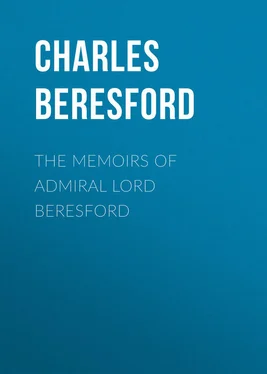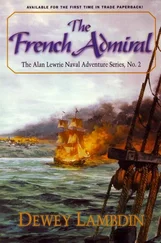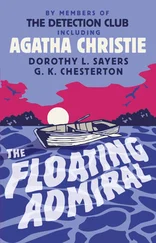Charles Beresford - The Memoirs of Admiral Lord Beresford
Здесь есть возможность читать онлайн «Charles Beresford - The Memoirs of Admiral Lord Beresford» — ознакомительный отрывок электронной книги совершенно бесплатно, а после прочтения отрывка купить полную версию. В некоторых случаях можно слушать аудио, скачать через торрент в формате fb2 и присутствует краткое содержание. Жанр: foreign_antique, foreign_prose, на английском языке. Описание произведения, (предисловие) а так же отзывы посетителей доступны на портале библиотеки ЛибКат.
- Название:The Memoirs of Admiral Lord Beresford
- Автор:
- Жанр:
- Год:неизвестен
- ISBN:нет данных
- Рейтинг книги:5 / 5. Голосов: 1
-
Избранное:Добавить в избранное
- Отзывы:
-
Ваша оценка:
- 100
- 1
- 2
- 3
- 4
- 5
The Memoirs of Admiral Lord Beresford: краткое содержание, описание и аннотация
Предлагаем к чтению аннотацию, описание, краткое содержание или предисловие (зависит от того, что написал сам автор книги «The Memoirs of Admiral Lord Beresford»). Если вы не нашли необходимую информацию о книге — напишите в комментариях, мы постараемся отыскать её.
The Memoirs of Admiral Lord Beresford — читать онлайн ознакомительный отрывок
Ниже представлен текст книги, разбитый по страницам. Система сохранения места последней прочитанной страницы, позволяет с удобством читать онлайн бесплатно книгу «The Memoirs of Admiral Lord Beresford», без необходимости каждый раз заново искать на чём Вы остановились. Поставьте закладку, и сможете в любой момент перейти на страницу, на которой закончили чтение.
Интервал:
Закладка:
The Marlborough was the flagship of the Mediterranean station. She was a wooden line of battleship, three-decker, launched in 1835, 4000 tons burthen old measure, 6390 displacement new measure, fitted with single screw horizontal Maudslay engines. The length of her gundeck was 245 feet 6 inches, her extreme beam was 61 feet, her maximum draught was 26 feet. Her complement was 950, and she always carried 100 or more supernumeraries. She was pierced for 131 guns and she carried 121 guns. She was one of the first ships to be fitted with wire lower rigging. In the Marlborough the old 24-inch hemp cable was used for laying out anchor at drill. It was the same class of cable as that which was used in Nelson's time; it was superseded by the chain cable.
The vice-admiral in command of the Mediterranean station was Sir William Fanshawe Martin (called "Fly" Martin); the captain, William H. Stewart; the commander, Thomas Brandreth: three of the finest officers that ever lived. The captain of the Fleet was Rear-Admiral Sydney C. Dacres, C.B. His duties were those of what we should now call a chief of staff. The office was subsequently abolished; and it was always my desire to see it restored.
Ships in those days were manned according to the number of guns they carried. The theory was that if the boats' crews were absent from the ship, there should always be sufficient men on board to work the sails and the guns. The watch-bills were made out upon this principle, the men being distributed among what were called the "parts of the ship." In the case of a newly commissioned ship, the making out of the watch-bills and assigning his place to each man, was the first thing to be done. It was no small task, especially as no printed forms were supplied for the purpose. The watch-bills were ruled and entered by the officers on paper supplied by themselves, and were arranged upon the tradition handed down for centuries. Even the signalmen supplied their own pencils and paper. Each ship made its own arrangement. It was not until 1860 that uniform watch-bills, quarter-bills and station-bills were instituted.
The men were classed in the following categories, each "part of the ship" being divided into port watch and starboard watch.
The Forecastlemen
The Foretopmen
The Maintopmen
The Mizentopmen
The Gunners
The Afterguard
The Royal Marines
The Idlers
The Forecastlemen were most experienced seamen. They wore their caps a little differently from the others. They manned the foreyard, and worked the foresail, staysail, jib, flying jib, jibboom, flying jibboom and lower studdingsails.
The Foretopmen worked the foretopsail, foretopgallant and foreroyal yards, foretopgallantmast, foretopmast and topgallant studding-sails.
The Maintopmen worked the maintopsail, maintopgallant and main-royal yards and maintopgallantmast, maintopmast and topgallant studding-sails.
The Mizentopmen worked the mizentopsail, mizentopgallant and mizen-royal yards, and mizentopgallantmast, mizentopmast and mizencourse (if there was one), also the driver.
The upper-yard men were the smartest in the ship, whose character largely depended upon them.
The Gunners, assisted by the Afterguard, worked the mainsail and mainyard. These were generally old and steady men, who were not very quick aloft. The gunners were also responsible for the care and maintenance of the gun gear, side tackles, train tackles and the ammunition. The senior warrant officer was the gunner.
There were only three warrant officers: – gunner, boatswain and carpenter.
The Royal Marines were divided between fore and aft, working on forecastle and quarterdeck. I remember seeing a detachment of Marines, upon coming aboard, fallen in while the blacksmith, lifting up each man's foot behind him, wrenched off and dropped into a bucket the metal on the heel of his boot, lest it should mark the deck.
The Afterguard worked on the quarterdeck and helped with the mainyard. They were the less efficient men and were therefore employed under the eye of the commander.
The Idlers were not idlers. They were so called because (theoretically) they had their nights in, although actually they turned out at four o'clock a.m. They were artificers, such as carpenters, caulkers, plumbers, blacksmiths, etc. They worked all day at their several trades until their supper-time. They were nearly all old petty officers, steady and respectable. It was part of their duty to man the pumps every morning for washing decks. I made up my mind that, if ever I was in a position to do so, I would relieve them of an irksome and an inappropriate duty.
In action, the carpenters worked below decks, stopping holes with shot-plugs, while many of the other Idlers worked in the magazines. Among the Idlers was the ship's musician – unless the ship carried a band – who was a fiddler. He used to play to the men on the forecastle after working hours and when they manned the capstan. Personally I always considered the name of Idlers to be anomalous. They are now called Daymen.
Among the ship's company were several negroes. At that time, it was often the case that the captain of the hold and the cooper were coloured men.
An instance of the rapidity and efficiency of the organisation of the Marlborough occurred upon the night before she sailed for the Mediterranean. She was newly commissioned, and she carried a large number of supernumeraries on passage. We took out 1500 all told. A fire broke out on the orlop deck; the drum beat to quarters; every man instantly went to his station, to which he had previously been told off; and the fire was speedily extinguished. The event was my first experience of discipline in a big ship.
The nature of the discipline which was then in force, I learned on the way out to the Mediterranean. In the modern sense of the word, discipline was exemplified by the Royal Marines alone. I cannot better convey an idea of the old system than by means of an illustration. Supposing that a Marine and a bluejacket had each committed an offence. The Marine was brought up on the quarter-deck before the commander, and the charge was read to him. The commander asked him what he had to say. The prisoner, standing rigidly to attention, embarked upon a long rambling explanation. If his defence were invalid, the commander cut him short, and the sergeant gave his order. "Right turn. Quick march." The Marine, although continuing to protest, obeyed automatically, and away he went. He continued to talk until he was out of hearing, but he went. Not so the bluejacket. He did not stand to attention, not he. He shifted from one foot to the other, he hitched his breeches, fiddled with his cap, scratched his head.
"Well, sir," said he, "it was like this here, sir," … and he began to spin an interminable yarn.
"That'll do, my man," quoth the commander. But, not at all. "No, sir, look here, sir, what I wants to say is this" – and so on, until the commander had to order a file of Marines to march him below.
But both Marine and bluejacket had this in common: each would ask the commander to settle the matter rather than let it go before the captain; and the captain, to sentence him rather than hold a court-martial.
The explanation of the difference between the old system of discipline and the new is that in the sailing days it was of the first importance that the seaman should be capable of instant independent action. The soldier's uniformity and military precision were wholly unsuited to the sailor, who, at any moment, might have to tackle an emergency on his own initiative. If a seaman of the old days noticed anything wrong aloft, up he would run to put it right, without waiting for orders. Life and death often hung upon his promptitude of resource.
In the old days, we would often overhear such a conversation as the following: —
Читать дальшеИнтервал:
Закладка:
Похожие книги на «The Memoirs of Admiral Lord Beresford»
Представляем Вашему вниманию похожие книги на «The Memoirs of Admiral Lord Beresford» списком для выбора. Мы отобрали схожую по названию и смыслу литературу в надежде предоставить читателям больше вариантов отыскать новые, интересные, ещё непрочитанные произведения.
Обсуждение, отзывы о книге «The Memoirs of Admiral Lord Beresford» и просто собственные мнения читателей. Оставьте ваши комментарии, напишите, что Вы думаете о произведении, его смысле или главных героях. Укажите что конкретно понравилось, а что нет, и почему Вы так считаете.












